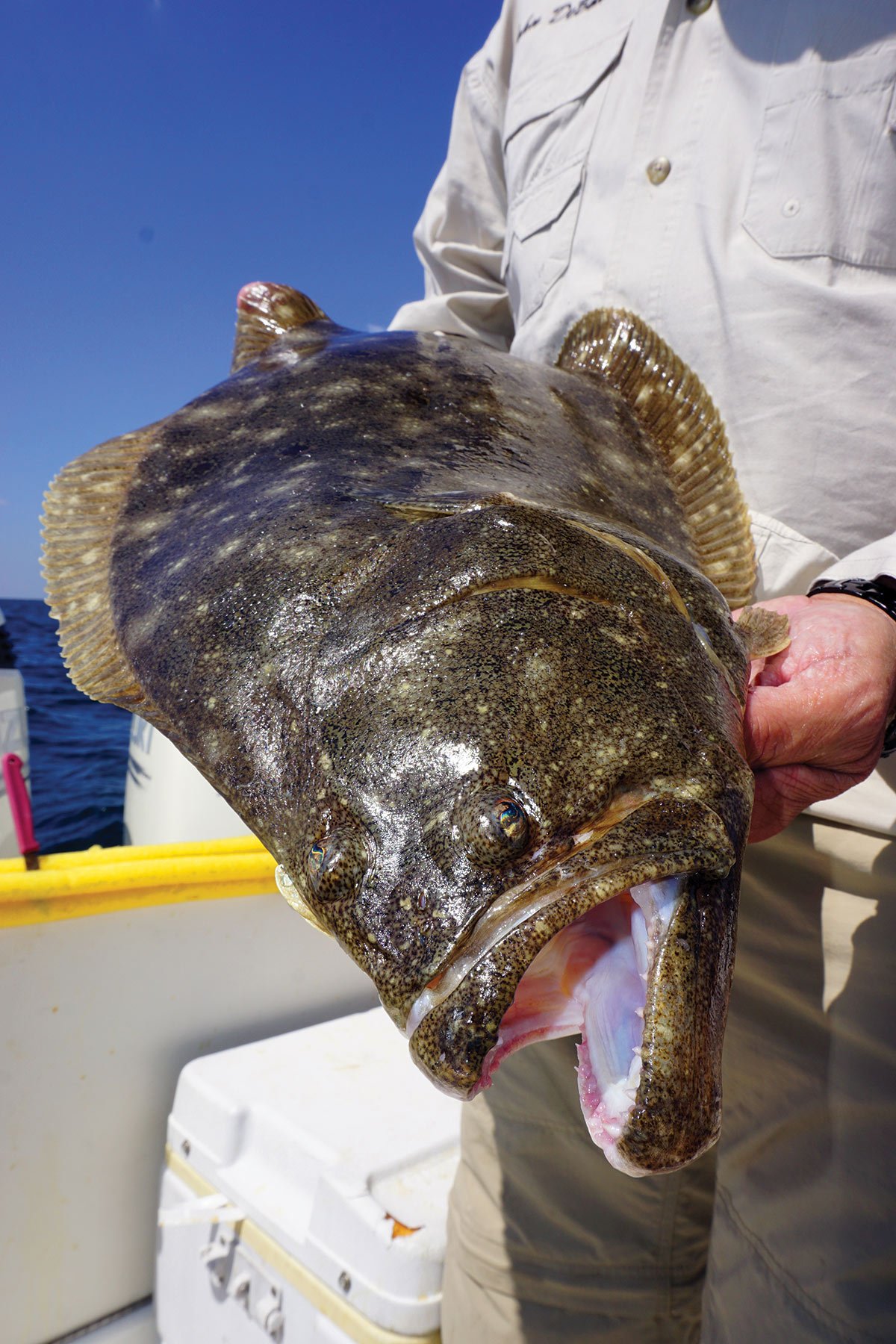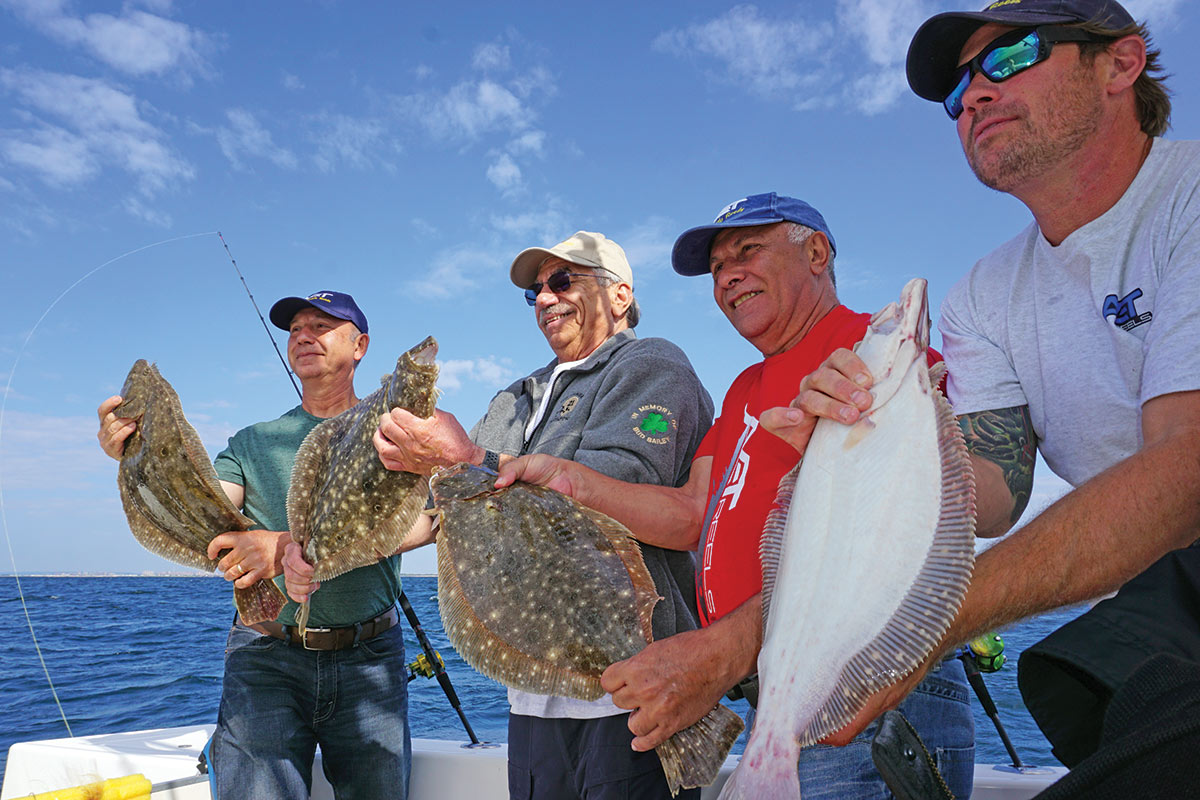
Those looking for a little flexibility in fluke regulations in 2019 may find “status quo” as just another “stab in the back.”
First, the good news; according to the long-awaited benchmark stock assessment, the summer flounder (fluke) stock is neither overfished nor subject to overfishing. Based on trawl surveys and harvest data from both the recreational and commercial fishing sectors, NOAA Fisheries’ Northeast Fisheries Science Center has declared that the fluke population is essentially healthy enough to warrant an increase in overall quota, thereby allowing fisheries managers to increase harvest limits for the 2019 season.
Now the bad news; based on new harvest information in the recreational community showing catches were up to three times higher than originally documented, any quota increase originally planned will be tempered with an additional level of precaution to ensure that our annual catch limits (ACL) for 2019 aren’t eclipsed because of that newly discovered effort and participation by NOAA Fisheries. How’s that for a sharp stick in the eye?
The Small Print
The Northeast Regional Stock Assessment Workshop (SAW) just wrapped up a comprehensive analysis of the fluke stock, which used an assessment model that includes revised estimates of recreational landings and discards from the Marine Recreational Information Program (MRIP). MRIP is the new MRFSS (Marine Recreational Fishing Statistical Survey) that uses dockside intercepts and random, household surveys to determine how many fish are caught each season by recreational fishermen.
In a nutshell, when SAW incorporated the new MRIP data, it resulted in an increased population size estimate compared to previous assessments. Statistically speaking, since there were theoretically three times as many fluke caught in the old days by anglers as originally believed, the population therefore must have been that much more robust than previously thought.
While presentation of the final data was delayed this winter because of the 35-day government shutdown, many believed that the new estimates would allow for increases of up to 40% in overall fluke harvest for 2019, a surefire win for those anxiously hoping for lower size limits and/or more available fishing days. The commercial sector will be getting a 40% quota increase because of all those increased recreational catch numbers; the angling community’s “increase” will be recognized by retaining last year’s regulations.
Statistically, saltwater anglers caught a whole lot more summer flounder in 2018 than the season, size and bag formula had forecast. In fact, what anglers theoretically harvested during the 2018 season is actually equal to the increased ACL we’re getting in 2019, so nothing is really going to change. That old idiom that says “a knife cuts both ways” is alive and well in 21st century fisheries management; or as musician Tom Waits once said, “the large print giveth, and the small print taketh away.”
A Delayed Decision
After the month-long government shutdown impacted release of the final stock assessment, the Mid-Atlantic Fishery Management Council (MAFMC) was finally able to convene from March 6-7, 2019 in Virginia Beach, VA to take up action on the fluke specifications for the next three seasons. They also hammered out the recreational measures for 2019. The final decision based on technical discussions and a final vote by MAFMC and members of the Atlantic States Marine Fisheries Commission (ASMFC) was that recreational anglers would retain the same season, size and bag limit in 2019 as we had for 2018.
Keep in mind that those 2018 fluke regulations were based on recreational harvest data from the year prior. Since those regulatory estimates were derived from the old data (MRFSS), there’s been a trickle-down regulatory impact on all future targets. Looking at last year’s regulations, the new numbers (MRIP) showed recreational fishermen landed around 7.20 million pounds of fluke last season, just about the exact increase in poundage (7.21 million pounds) that we’re getting this season.
Yes, 7.2 million pounds is a significant increase over our ACL from 2018 based on that good news in the benchmark stock assessment; the increased landings data from MRIP indicate that by keeping last year’s regulations in place, the recreational sector will stay in check with the 2019 quota, effectively a net gain of zero.
There is some wiggle room from an argument’s sake; looking at the next three years of specifications, the monitoring committee that oversees summer flounder has allowed MAFMC and ASMFC to allow a slight increase of roughly 8% over the previous year. However, there’s also a 7% buffer of error precaution built in that makes a flexibility argument much harder to win, in a regulatory window that is quickly coming to a close in anticipation of the new season ahead.
Pieces of the Pie
The quota allocation battle has also amped up in the ongoing debate over fluke. During the MAFMC meetings in Virginia, letters were presented on behalf of New England legislators who are unhappy with the current state of the state-by-state allocation. “We remain disappointed that the current summer flounder quota allocation system has not changed since 1993,” noted the two U.S. Senators from Connecticut, Richard Blumenthal and Christopher Murphy in their letter to MAFMC. Citing meetings with Connecticut fishermen, Senators Blumenthal and Murphy said “the MAFMC continues to shortchange New England states when it comes to commercial summer flounder quotas.”
“Unfortunately, because of outdated state-by-state commercial allocations remaining so low, our fishermen must continue to throw catch overboard,” they said, criticizing MAFMC for continuing to “rely on data that is over 30 years old to set allocations.” The U.S. Senate delegation of Jack Reed and Sheldon Whitehouse from Rhode Island noted essentially the same thing in calling upon the MAFMC and ASFMC to jointly address the fluke allocations with an eye towards New England states. “We appreciate the Council and Commission’s efforts to address the significant concerns regarding the management of this fishery, which has not been altered since 1993 and is based on landing data from the 1980s,” the Rhode Island letter stated.
Earlier this year, New York Governor Andrew Cuomo and state attorney general Letitia James announced that the state of New York was moving ahead with plans to sue the federal government over what they perceived to be “unfair fishing quotas” for summer flounder. “The federal government’s reliance on inaccurate and outdated data to set limits on commercial fluke fishing in New York is a direct threat to our state’s fishing industry,” AG James stated, while citing the use of old data from the 1980s to determine which states get to fish and how much.
“The federal government has turned a blind eye to low quotas and restrictive inter-state fishery management plans that are putting unreasonable limits on New York’s commercial fishing industry,” said Basil Seggos, New York’s commissioner of Department of Environment Conservation. That’s a lot of finger-pointing and tongue-wagging on behalf of the commercial fleet; but it leaves recreational anglers wondering what the new data show in terms of allocation towards that community. The recently enacted Modern Fish Act has been highly touted by recreational fishing groups in the Southeast for including language calling upon the federal government to reopen the commercial vs. recreational allocation battle with species like red snapper; however, the law was written specifically to exclude fisheries managed by the Mid-Atlantic and New England management councils.

It’s Only Fair
Based on the latest data from MRIP, the recreational sector should clearly have more of the fluke quota, at least 7% if not more. In 1992, the summer flounder fishery plan was changed to establish a commercial/recreational allocation split of 60/40 using harvest data from 1980-1989. While New York, Connecticut and Rhode Island argue for an adjustment to the allocation formula, the Recreational Fishing Alliance (RFA) said that the commercial sector should also willingly give up at least 7% of their quota back to the recreational fishermen, if not more.
“RFA believes that it would be unfair to continue using outdated landings information, information that is not the best available science, to set the 2019 commercial and recreational ACL,” said RFA executive director, Jim Donofrio. “RFA believes that NOAA Fisheries has an ethical and legal responsibility to set the 2019 summer flounder specifications using the best available science.”
Donofrio said RFA does not feel this change has to go through another amendment process, nor does language in the recently passed Modern Fish Act need to be negotiated; he said it’s just something that should’ve happened immediately once the new data was incorporated by the federal government. “If NOAA Fisheries is going to monitor our sector using these revised MRIP numbers then it must be consistent and use these numbers to also set the recreational ACL moving forward.”
In terms of the north versus south debate, there’s probably a good reason why you never hear complaints from anglers in North Carolina, Virginia, or Maryland about fluke limits there; the seasons never change because the majority of the quota allotted down south is hardly even touched.
“North Carolina just has more fish in their state-allocation of fluke than they actually have in the waters offshore, that’s why their fleet steams north to the Hudson Canyon every winter to harvest all of their commercial quota,” said RFA managing director John Depersenaire.
Sometime this month, state agencies will be holding public meetings to discuss this regulatory fiasco, getting public comment on the regulations and potentially raising late-inning rallies to grab a few percentage points (read: days of additional fishing) on the final stats. Northern states in particular are hoping to at the very least improve upon regulations for scup (porgy) as that fishery continues to expand on its northern range.
As for the Mid-Atlantic and Northeast’s favorite flatfish, it’s just another year, and another regulatory knife to the back, again.
| STATE MEETINGS |
|---|
|
Expect state environmental conservation and resource meetings to be held sometime this month and possibly into May as the March decision by fisheries managers gets deliberated at the state level. For up to the minute news and information about 2019 fluke regulations, go to TheFisherman.com and be sure sign up for our free, biweekly news alerts. |




